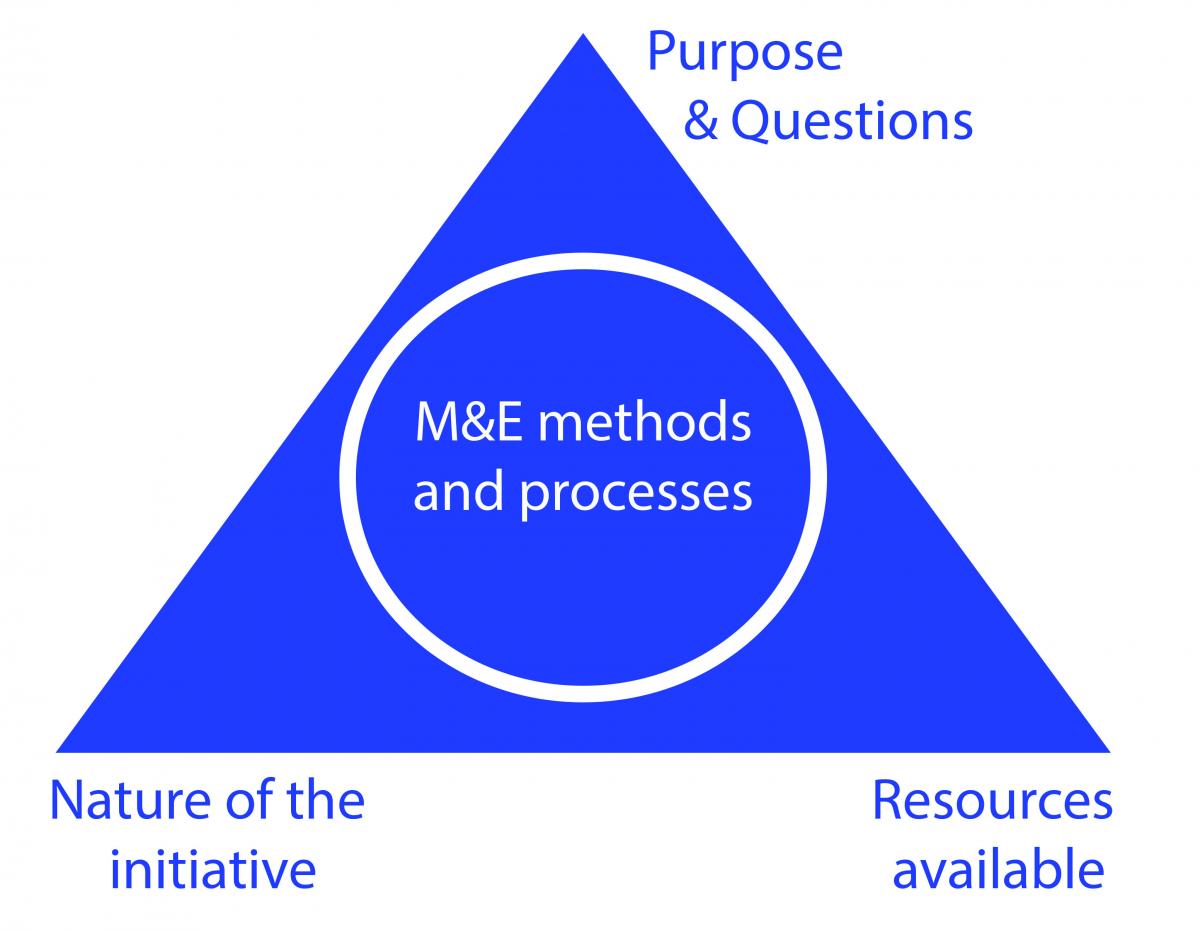C4D: Decide purpose
What is it?
The purpose of the R,M&E, and the key driving questions is one of the three key components that should determine the M&E methods and processes that are used. The other key issues are determining and securing resources and understanding the nature of the initiative (for which it may be useful to read about developing program theory or logic model with complexity). This discussion about uses is also associated with the task of identifying primary intended users. It is important to be specific about purposes (i.e. more than grand statements about 'learning and accountability'). It is also important to understand potential conflicting purposes.

General information
The Rainbow Framework includes detailed information on deciding purpose, including more information about common purposes, and resources on, for example, potential conflicts between learning and accountability. This page is recommended background reading before considering methods to apply to C4D.
Applying the C4D principles
Learning-based
The approach advocated by the C4D Evaluation Framework is to use R,M&E processes for adaptive and learning based process, so that findings can be fed into ongoing C4D activities. This is because most C4D activities are complicated or complex (to understand the nature of your activity see Complexity).
Accountable
R,M&E can be useful for accountability purposes, because it can be used to report back to all people and groups connected to the C4D initiative (including donors, managers, partners, community groups, ‘beneficiaries’ and others).
Complexity
The evaluation’s purpose might need to change to support emerging findings and learning. How programs are implemented may change as a result. The primary intended users and their needs should be reviewed and revised to accommodate change.
Recommended methods and adaptations for C4D
Here are some ideas about common intended uses. It can be useful to think about this in conjunction with Identifying primary intended users.
Primary intended uses Primary intended users Incremental adjustments and improvements? Program managers? Revisions during annual planning or end-of-cycle changes? UNICEF (or similar agency) staff? Accountability? (consider to whom - eg funders, local community, peers) Implementing partners? Local community? Civil society? Contributing to evidence base about what works for whom in what context and how? Government partners – central agencies? Line agencies? Informing subsequent investment decisions Joint funders and donors? Advocacy on behalf of the community? Civil society?
Resources
This guide states very clearly that monitoring and evaluation should be for both learning and accountability (p10, 26), and argues that designing the monitoring and evaluation frameworks and tools is critical to achieving these objectives. This resource is consistent with the C4D Evaluation Framework in relation to this task in the following ways:
- Learning-based: the guide suggests involving theatre actors in data collection and management (particularly in community scans) so that this can inform programming.
- Accountable: the guide frames monitoring and tracking as responsibilities to ensure accountability, which is important because 'Unless the PTC programming is implemented with sufficient quality and rigour along PTC standards, it cannot be expected that the programme would result in the desired change' p 28.
This TOR is an example of an evaluation that is specifically aimed at achieving learning outcomes. Although the term 'C4D' is not used in this TOR, the activities include campaigns, mobilisation, coalition building, and women's groups and school clubs: all relevant to C4D. The approach and the TOR are consistent with the C4D Evaluation Framework in relation to this task in the following ways:
- Learning-based: learning is the primary objective of this evaluation (see page 2). This is justified on the basis that the evidence base on theories of change and what works in tackling violence against women and girls is weak, and the donors, program staff and 'beneficiaries' all prioritise learning and contributions to evidence and lessons. This is achieved through a phased, adaptive, and learning-based process above where findings are built into the change theory and implementation over time, the users (specified on page 9) are the program staff and partners who will use the findings to improve implementation, the 'beneficiaries' who will use it to better understand effective strategies for change, and DFID who are interested from a policy point of view.
'C4D: Decide purpose' is referenced in:
Framework/Guide
- Communication for Development (C4D) :
- Communication for Development (C4D) :
- Communication for Development (C4D) :
- Communication for Development (C4D) :
- Communication for Development (C4D) :
- Communication for Development (C4D) :
- Communication for Development (C4D) :
- Communication for Development (C4D) :
- Communication for Development (C4D) :